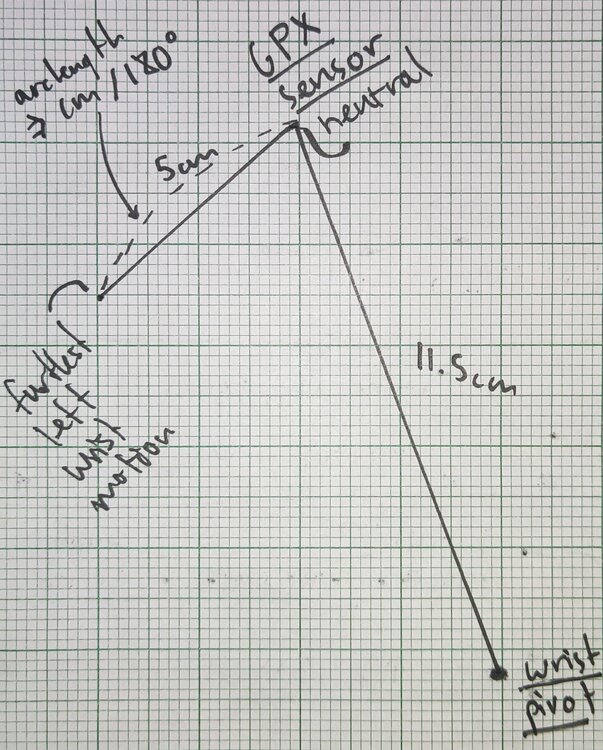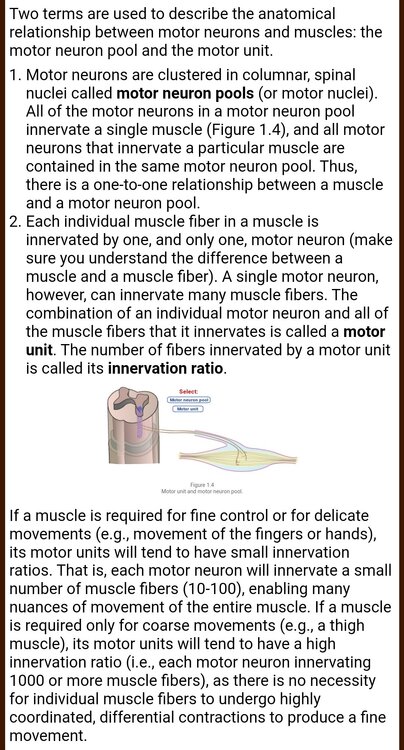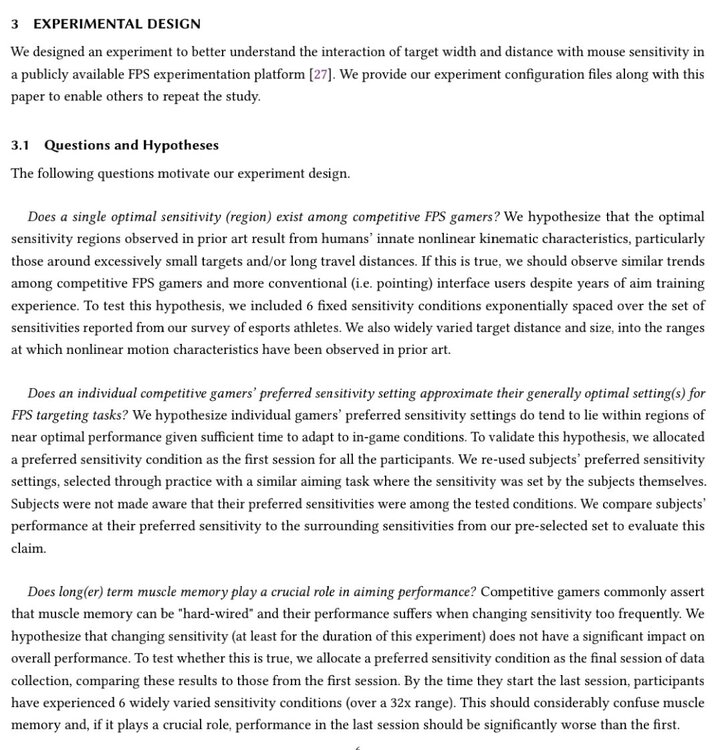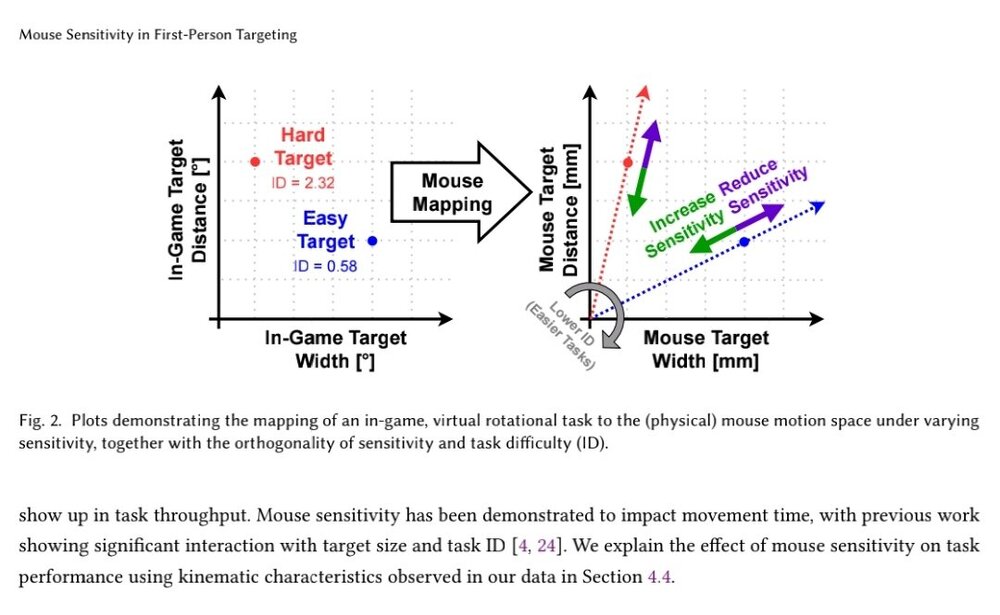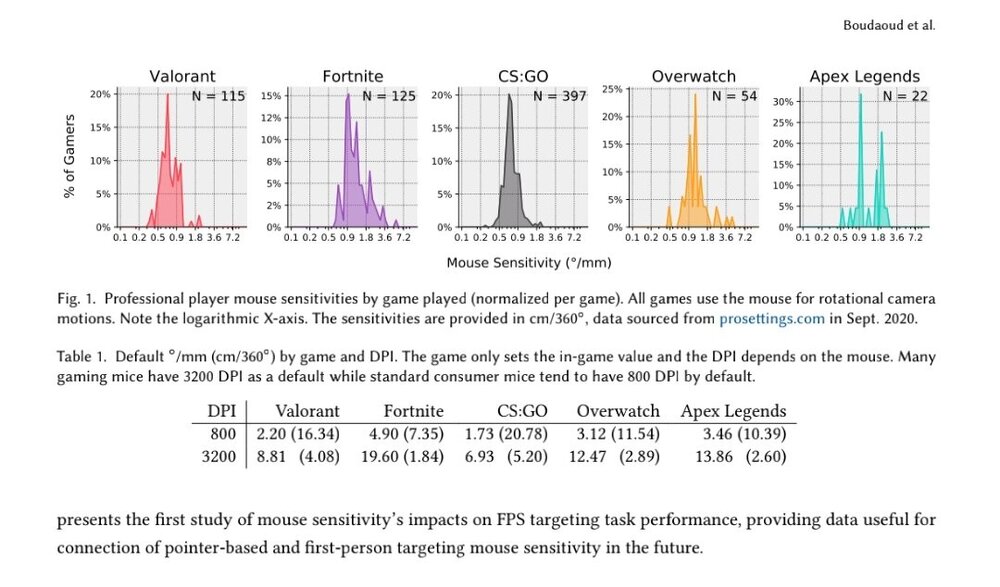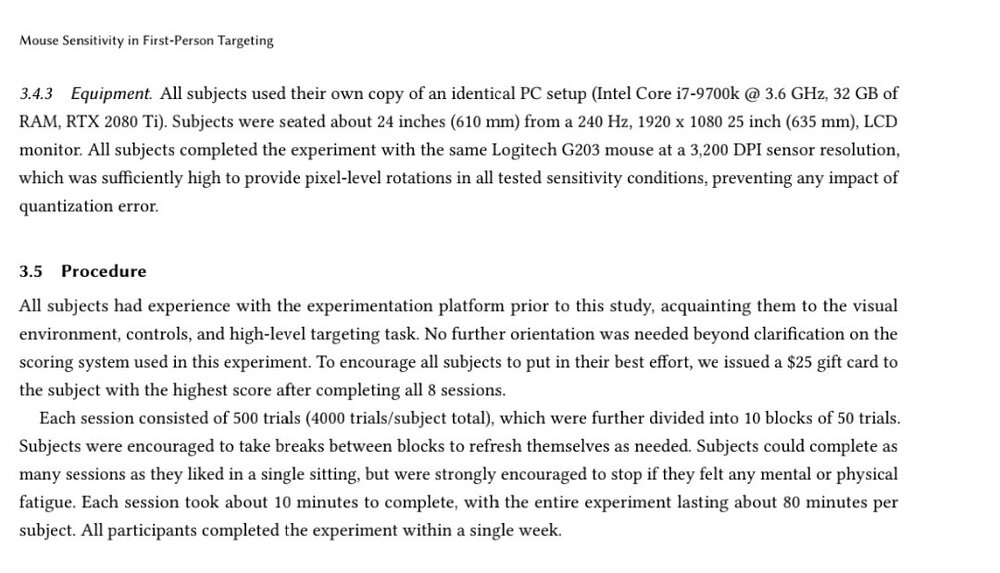
heckminth
Members-
Posts
28 -
Joined
-
Last visited
Recent Profile Visitors
The recent visitors block is disabled and is not being shown to other users.
heckminth's Achievements
-
 heckminth reacted to a post in a topic:
A way to fix cm/360 for wrist players, also, a way to get scary good cm/360 as a wrist player.
heckminth reacted to a post in a topic:
A way to fix cm/360 for wrist players, also, a way to get scary good cm/360 as a wrist player.
-
 heckminth reacted to a post in a topic:
What is the formula of fov scaling?(or how it works since idk if there is a formula or no))
heckminth reacted to a post in a topic:
What is the formula of fov scaling?(or how it works since idk if there is a formula or no))
-
 heckminth reacted to a post in a topic:
How do you convert 2D to 3D sensitivity with MDV 0%?
heckminth reacted to a post in a topic:
How do you convert 2D to 3D sensitivity with MDV 0%?
-
How do you convert 2D to 3D sensitivity with MDV 0%?
heckminth replied to heckminth's topic in Technical Discussion
I understand that we use tan(radians/2) for MDV 0% between different FOVs, but what about 2D to 3D? -
 heckminth reacted to a post in a topic:
How do you convert 2D to 3D sensitivity with MDV 0%?
heckminth reacted to a post in a topic:
How do you convert 2D to 3D sensitivity with MDV 0%?
-
 heckminth reacted to a post in a topic:
A way to fix cm/360 for wrist players, also, a way to get scary good cm/360 as a wrist player.
heckminth reacted to a post in a topic:
A way to fix cm/360 for wrist players, also, a way to get scary good cm/360 as a wrist player.
-
Here's what I took away from this: The innervation ratios of muscles in the hand and wrist are substantially lower than those in the arm and shoulder, so they are used for fine control, such as when aiming with a mouse. Furthermore, many muscles in the hand operate across multiple joints, such as the main finger extensor, which generates torque about every joint in the hand, as well as the wrist and elbow. This torque is counteracted by other muscles, so even the simplest seeming motion requires highly complex muscle coordination. Larger motions require more coordination, which further complicates the motion that motor neurons have to generate. Joint stability improves when you utilise isometric contractions as opposed to isotropic contractions. Larger isotropic contractions are a necessary consequence of arm aim. If you keep your forearm stationary and activate it at the same time, then the stability of your elbow and wrist will increase. It's not necessarily better to use purely wrist aim, but there are ways to benefit from it, just like there are ways to benefit from other aiming styles. It's a matter of understanding and training. Super interesting! Thanks for sharing.
-
 heckminth reacted to a post in a topic:
A way to fix cm/360 for wrist players, also, a way to get scary good cm/360 as a wrist player.
heckminth reacted to a post in a topic:
A way to fix cm/360 for wrist players, also, a way to get scary good cm/360 as a wrist player.
-
As a UE5 Dev, I just wanted to thank everyone in this thread for the help. I was having trouble with my sensitivity values, turned out mouse smoothing and FOV scaling were the culprits.
-
. The study you cite does not prove anything about the range of sensitivities that I am talking about besides the fact that it's uncommon and that people don't just stumble onto using it. Professional players tend to use lower sensitivities but almost all of them started out with much higher sensitivities. The trend is that, as your aim improves, because your muscles get stronger, your sensitivity decreases to compensate. The sensitivity I now use is clearly much higher than what most professional players even start with. I use 25600 CPI to make this sensitivity feel usable, it would not be usable on 400 CPI. They used 3200 CPI for this study and they ensured, "pixel-level rotations in all tested sensitivity conditions," which means they used sensitivities very far outside the range of sensitivities that I am talking about.
-
n0thing's explanation is good because he bases it on his experience as a professional player. He is a good example of what I am talking about when I say that professionals have their own preconceived notions about sensitivity. His conclusion that players should utilise both arm, wrist, and fingers together to aim only makes sense if he's talking about the ranges of sensitivity that are low enough for that, which of course he is. If he was forced to use higher sensitivities, closer to what I now use, then his conclusion on what the right way to aim is would be different, for instance, arm aiming would be pretty useless. Similarly, if he used lower sensitivities than he is currently used to, then he would be less reliant on his wrist and fingers and much more reliant on his arm. Again, I am not saying that one is inherently better than the other, I am just saying that it should be taken seriously and investigated. The whole argument comes down to one point: is wrist aim more controlled than arm aim? According to n0thing (and most other professional players), it is. Just because his conclusion about techniques is different doesn't mean that his underlying points are any different to mine. I didn't cherry pick anything, there are many videos of professional players saying the exact same things about aim, but their conclusions only work for "normal" ranges of sensitivity, they aren't thinking about sensitivities of 10cm/360 and over, and that's my point. We have no good reasons to assume that the observed trend between aiming ability and sensitivity for low sensitivities continues at "extreme" sensitivities. Since the researchers that devised this study made their methods public, I will perform my own version of the study with a sample of 2 (me and my girlfriend) to attempt to show you some amount of tangible evidence that could substantiate or invalidate the points that I have been making. Like I warned in my previous post, the anecdote of my girlfriend's recent experience with this method is not my main point because I realise it's not a very strong form of evidence. I have not been able to record any data yet, because I only just started using this sensitivity myself and I've never really been one to aim train a lot. That being said, it would be nice if you could stop dismissing every point I make as "broscience" because I'm not using pseudoscientific reasoning and I am not trying to mislead anyone. This is not my method, I just tried it out, was surprised, and wanted to share my personal experience so that others would give it a go and see for themselves. How is that "broscience"? Whatever hypothesis I come up with to make sense of this method is certainly not going to be a completely accurate explanation of what's happening. That being said, I have to hypothesise something before I can understand what's happening and test it scientifically, I am contending that a sensitivity based on the arclength created by my wrist is ideal for never having to reposition the mouse. That statement shouldn't require any empirical data to grasp (although it would require empirical data to prove). If you want to focus on tracking aim, which is a more controlled form of aim than flicking (and that should also be uncontroversial), then this method is the only one that I can think of to completely replace flicking with tracking. If you were to use the arclength created by your entire arm (hand included) as your cm/360, then that sensitivity would be low enough that you would probably flick to targets with your wrist and track with your arm, as n0thing concluded. You contend that there is scientific consensus on this issue and that I am being pseudoscientific, then you cite data that is clearly only looking at ranges of sensitivity that are much lower than the range that I have been talking about.
-
 heckminth reacted to a post in a topic:
Weird ADS Values Converting Desktop to Apex Legends?
heckminth reacted to a post in a topic:
Weird ADS Values Converting Desktop to Apex Legends?
-
I should have specified that this doesn't only "work" for me, it's what works best for me out of everything I have tried. I have used a wide range of sensitivities and tried many different acceleration curves over several months, and nothing gives me as much accuracy and comfort as this style of aiming. I took measurements of my girlfriend's hand and calculated her ideal sensitivity, within just 10 minutes on it she has gone from silver aim to what I would say is reasonable for a master guardian player. I know that's just one anecdotal example, so it's really not my main point, but I also don't find it likely that this high sensitivity is inherently, scientifically worse than a more "normal" sensitivity, given how considerable of an improvement it has made for my girlfriend. She sucks at games, but her shaky aim has gone away and so now her gameplay is much better, I have experienced the same. I play a lot of Valorant and CSGO, which are more reliant on flicks than tracking. As you rightly pointed out, Quake is better suited to tracking aim. On this high sensitivity, I no longer "flick" in Valorant or CSGO, instead, I smoothly snap to targets by "tracking" to them in a way that is more accurate and consistent than flicking because I don't have to mouse lift. My mouse never leaves the surface of the mousepad and my wrist never gets tired, I'm basically always tracking. The speed then comes from the sensitivity and lack of overshoot/undershoot or shakiness. All I have to focus on is the control from my wrist, which at first requires a lot of effort, but then feels effortless after practicing for a couple hours. Most of the work I had to put in went into staying calm rather than tensing up my wrist and being precise rather than fast. It's not how fast you move, it's how you move fast. Slow is smooth, smooth is fast. Low sensitivities limit range of motion, so they can never be totally smooth, you will have to lift your mouse and reposition, which can be a bad habit. The typical range of sensitivities that people use is influenced by beliefs about aim that may or may not be myths. Studies that recommend a certain range of sensitivities are going to be performed mostly with people who are not aiming with a technique conducive to high sensitivities because such techniques are rare and only typically used in games like Quake. If they select professional gamers for the study, then the data is biased because gamers already have their preconceived notions about sensitivity. If they select non-gamers for the study, then the data is still useless in proving anything about high sensitivities because they have no proper instruction in how to aim. You use muscles in your wrist to control your wrist. If those muscles are stronger, then your wrist will be more stable. How is that pseudoscience? Explain in detail, don't just dismiss and say, "science." Here's n0thing, a professional CSGO player, talking about how people typically combine wrist aim and arm aim: On lower sensitivities, the range of motion of your wrist covers a small cone of your FOV. With this method, the motion of your wrist covers the entire sphere. So, if you can learn to be precise on a high sensitivity, isn't it more advantageous to have your "comfortable range" be everywhere within the sphere as opposed to just one part of the sphere? Because then you don't have to train arm aim and wrist aim, you can just train wrist aim, which, as n0thing says, is more controlled.
-
Weird ADS Values Converting Desktop to Apex Legends?
heckminth replied to heckminth's topic in Technical Discussion
I have a follow up question, is the minimum sensitivity in Apex really 0.01 as is stated by your calculator? The sensitivity value in the in-game menu always rounds up to a minimum of 0.2 when I input any value lower than 0.2. -
Weird ADS Values Converting Desktop to Apex Legends?
heckminth replied to heckminth's topic in Technical Discussion
cl_fovScale 1.7 works and is explicitly allowed by Respawn, you just have to set it in both profile.cfg and autoexec.cfg. I see, thank you. -
You need to research this. Go watch at least a half hour of the presentation that I linked. What I stated is, in fact, how the human body works. Muscle recruitment can be increased through high effort training. There are people born with medical conditions who have extremely high muscle recruitment and so are able to perform feats requiring inhuman levels of strength that would otherwise be impossible given their overall muscle mass. Most trained athletes only recruit a maximum of 50% of their muscle fibers in any activity, the average person is capable of recruiting only 20-30% of their muscle fibers. Increasing muscle recruitment increases grip strength which allows you to lift much heavier loads. This is why adrenaline makes you stronger. You're not instantly gaining more muscle, you're just using more of the muscles you have at once. Adrenaline makes your blood vessels contract and causes your heart and lungs to work faster, so they direct more blood to your heart and muscles, resulting in a temporary boost in strength which can typically last for up to an hour. Permanent increases in maximum strength are either the result of an increase in muscle mass or an increase in the maximum percentage of motor units that can be recruited at once. It's called the mind-body connection. The stronger the individual muscle, the more controlled the individual contraction. If your wrist is very strong, your aim will be controlled. If you use your arm and shoulder, you will need a lot more strength in all of those muscles to keep the overall motion just as controlled. It takes more coordination to move more muscles than it does to move just a few. That's the principle that the OP was talking about. You call this method ridiculous because it flies in the face of what you currently believe to be the correct methodology, in other words, you have a bias to ridicule it. And that's fine, you can ridicule all you want, but at least base your ridicule on evidence. There are indeed a lot of pseudoscientific claims made about aiming, but the claims that the OP is making are backed by actual physiology. These so-called "ridiculous" sensitivities are practical for some people. Why do Quake players have a reputation for really great aim if most of them use high sensitivities and high sensitivities are supposed to be bad? I have provided empirical evidence that aiming with a really high sensitivity works for me, just watch the clips I sent where I am on 11cm/360 (or roughly 4.3inches/360). I am not suggesting that a high sensitivity will work for you or for everyone, I am just stating the fact that it has worked for me and that it can work for other people. It's different to what you would expect, but it's not wrong.
-
Someone might be able to help if you mentioned what measurements you took and what cm/360 you ended up with. There could be a problem with your measurements or with your calculations, alternatively, your hands could just be very large, no one else would know what's happening with your calculations until you lay them out. I also kept getting very low sensitivities until I realised that we're supposed to take the arclength (not the circumference) of the circle as sensitivity in cm/360 because we're trying to squeeze a full 360 into one leftmost flick (which is your most limited range of wrist motion). If you prefer, you can try to squeeze only 270 degrees into the same motion by multiplying your arclength by 1-(270/360)+1, if my Maths is correct.
-
I can concur, my tracking feels really shaky right now. Not enough motor units are going off. The solution is to train at maximum effort (the greatest force) causing muscle recruitment to increase. I need to begin training slow motor units (tracking) at low speeds, then gradually higher speeds, before moving on to small flicks and finally large flicks. Here's my source: https://youtu.be/daLgIAZ3K0U
-
 heckminth reacted to a post in a topic:
A way to fix cm/360 for wrist players, also, a way to get scary good cm/360 as a wrist player.
heckminth reacted to a post in a topic:
A way to fix cm/360 for wrist players, also, a way to get scary good cm/360 as a wrist player.
-
I found that this works well. Probably the best way of finding a good high sensitivity. Here's mine: https://www.mouse-sensitivity.com/?share=e364d4ee2c1a74f60fd985a288c738d6 Here's what I did: 1. Measure the length from the base of your wrist (which is below your palm) to the tip of your middle finger (which should be aligned with your forearm and the middle of your wrist). Mine is 18.5cm. 2. Grab your mouse like you normally would in-game and place it on top of a piece of paper. 3. Still gripping your mouse, grab a pen in your free hand and place it upright perpendicularly to the paper so that the tip is almost touching the surface. 4. Place the pen next to the tip of your middle finger and mark the position on the paper with a dot, noting the relative position of the pen to your middle finger. 5. Flick to the left as far as you can comfortably go with your wrist planted firmly. 6. Mark this new position on the paper, ensuring that the relative position between the pen and your middle finger is roughly the same. 7. Measure the length of the line that connects these two points that you have now marked on the paper. Mine was 11.2cm. 8. Take the length of the line on the paper as the chord length and the length from the base of your wrist to your middle finger as the radius. 9. Use these values and calculate the arclength, which you take as your new cm/360. I imagine that this method only works if your mouse's sensor is capable of achieving an extremely high CPI natively, such as the GPX Superlight's Hero 25k Sensor (which is what I use). Here are some clips of me playing with this ridiculously high sensitivity and aiming really accurately on it:

